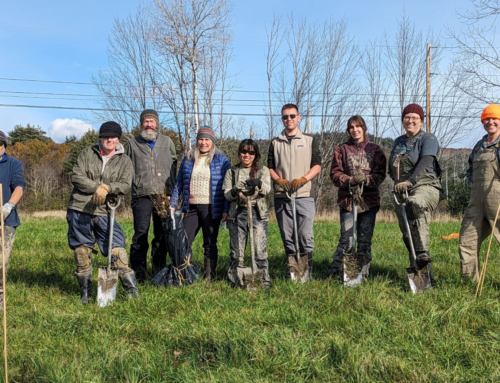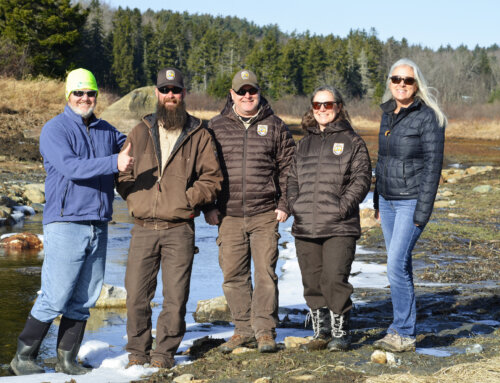This commentary is by Andrea Donlon, who lives in Buckland MA and is River Steward for the Connecticut River Conservancy.
The Connecticut River is New England’s longest river and supports migratory fish like American shad, American eel, sea lamprey, and river herring. Two species of federally endangered sturgeon move in and around the river, including the shortnose sturgeon that have important habitat near Cabot Station, the hydropower station at the end of the Turners Falls canal. Multiple hydropower dams on the Connecticut River block a fish’s journey upstream or downstream – dams can prevent movement, peaking flows can create all kinds of problems, and turbines can be fatal.
The Turners Falls Dam and Northfield Mountain Pumped Storage Project are going through relicensing now and a new license will set terms and conditions for the next 40 or 50 years. It’s important that the Federal Energy Regulatory Commission (FERC) hear from residents and visitors who care about the river and fish so that the best possible balance can be struck between environmental, recreation and cultural interests vs. corporate profits and the need for carbon-free energy.
FirstLight Power submitted an Amended Final License Application to FERC in December. The Connecticut River Conservancy (CRC) has been following this process for the past nine years. Based on the application, here is what is proposed for migratory fish:
- Improve upstream fish passage. FirstLight proposes to put more water in the river channel in Turners Falls below the dam during the fish migration season. They are also proposing to build a new fish lift at the Turners Falls Dam that would be similar to the fish lift at the Holyoke Dam. The fish ladders that are currently in place have never worked well. FirstLight will install eel ramps to allow for eels to pass upstream. These elements of FirstLight’s application are good. Power generation at Cabot Station will still attract migratory fish, so FirstLight proposes to install an ultrasound array to repel fish. They have done some initial studies on this technology, but it’s uncertain if this will really work and it’s possible there are negative consequences to fish and other wildlife. More needs to be understood about this technology before we dismantle the old fish ladder at Cabot Station.
- Make downstream passage safe for fish. At Turners Falls Dam, FirstLight is proposing to excavate a “plunge pool” for fish spilling over the dam and install a rack to prevent fish from going through the turbines at Station 1 (a small generating station off the canal). FirstLight has not proposed additional protection measures at Cabot Station despite studies showing mortality of shad in this location. This lack of protection for fish at Cabot Station is unacceptable. FirstLight proposes to install a large net across the tailrace area where Northfield Mountain moves water in and out of the Connecticut River in Northfield, in order to protect fish that are migrating downstream. CRC still has many questions about whether this net will work, and it also does not address the impact on fish eggs or fish larvae.
- Make the flows at Cabot station better for wildlife and for recreation downstream. Upstream of Turners Falls, Great River Hydro, the owner of the Vernon, Bellows Falls, and Wilder Dams, worked with stakeholders to create an operation plan that is dramatically different than the way these facilities run today. These dams will shift from daily peaking to inflow=outflow operations, with built in flexibility to take advantage of a market opportunities a few times per month (varying by season). FirstLight has proposed some minor restrictions to ramping up and down, depending on the season, but it’s time for them to adopt an operating regime closer to Great River Hydro’s that reduces peaking.
Residents and visitors to the area have been watching the river for a long time and have a lot of good observations and ideas. Tell FERC that FirstLight needs to do more to protect migrating fish. There will be a comment period during the summer, but you can also file comments any time at ferc.gov. FERC will use all the comments and FirstLight’s license application to set license terms that will be in place for the next 40-50 years. Get all the details on how to speak up for your rivers at ctriver.org/hydropower.
CRC will be summarizing other elements of the license application in upcoming months.







